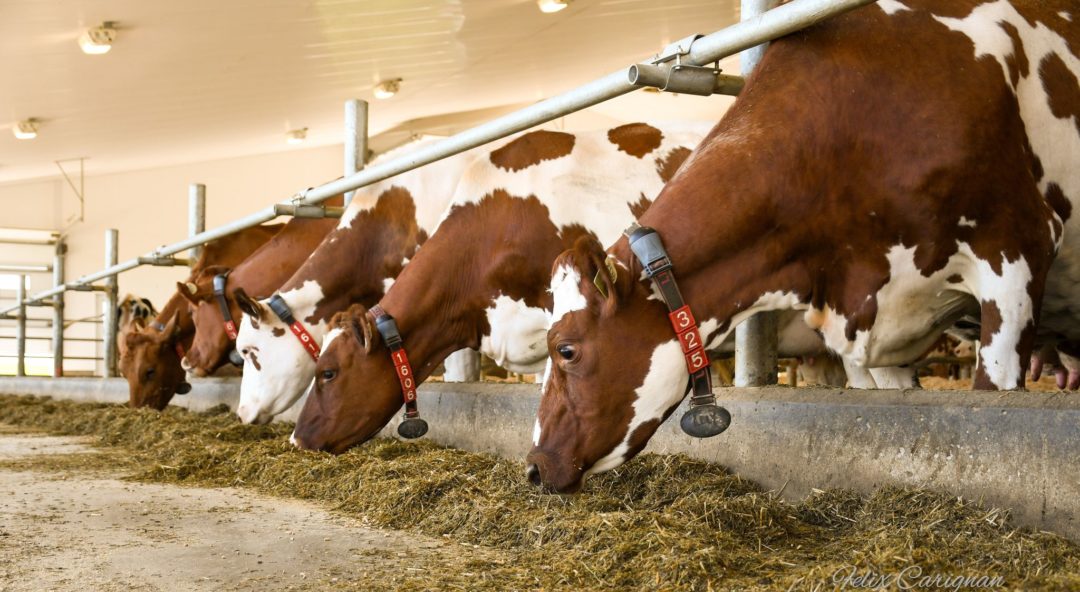Growth eroded by imports, public expectations in terms of environmental, social and governance factors (ESG) and American intrusion into the mechanics of our dairy policy – the current situation brings its share of challenges to the dairy sector. Here’s what to expect in the coming months.
Growth challenge
Canada is currently facing a large volume of new imports as the implementation periods of three trade agreements (CETA, CPTPP, CUSMA) overlap. This unusual situation poses a real growth challenge for the industry.
As the implementation of these agreements is completed, the dairy industry should be able to reclaim Canadian market growth. We’re getting closer to that. For example, next year, the 2% or so of the market granted to Europe will be fully integrated into our market. The other two agreements will take a few more years. Then a new balance will be found, although with a larger share of the Canadian market open to the world.
Despite these new imports, the strength of Canadian demand should still leave room for residual growth in domestic production. This is to be hoped for, as total Canadian requirements are growing at a rate of about 3% per year, and this pace is likely to continue.
Beyond the pressure of new imports, the desire for growth remains present in many companies. The demand for the quota is fueled by both the dynamism of entrepreneurs and the low volume of quotas currently allocated. In Quebec, the low proportion of purchase offers filled at the centralized quota sales system and the constant increase in its value in the Western provinces are important indicators.
The current slow growth is accompanied by a non-negligible influx of cash: $1.75 billion announced by federal government between 2019 and 2023. It sounds paradoxical, but these sums represent a strategic management challenge for the dairy sector. As they replace production volumes that are lost forever, they would be better invested in strengthening the strategic positioning of dairy farms.
This money could be used for technological transformation, which most often goes hand-in-hand with volume growth, leading to consolidation. At the same time, the fastest increase in the cost of several inputs relative to the price of milk is creating significant incentives to increase volumes and productivity.
Customer expectations
Another major trend is the complexity of consumer expectations, which often puts economic and ethical issues head-to-head. The consumer now demands a high-quality product at a competitive price while constantly increasing expectations. In addition, the carbon footprint of food products will likely play an increasingly important role in commercial positioning.
Another observation that emerges from this complex business environment is: The issues at stake challenge several links in the chain at once. This is another example showing several strategies that have been developed and applied in a context of partnership between the various links in the chain. It is a necessary collaboration that is even more important in a context of internationalization and increased complexity of risk.
American presence
Whether we’re talking about export restrictions on solids, non-fat or the abolition of Class 7, the U.S. view in certain aspects of Canadian dairy policy can be destabilizing. The ongoing U.S. offensive – centered around quota allocation and the entry into Canada of the volumes negotiated through CUSMA – adds to the uncertainty. Unlike the import volumes already provided for in the agreements, it is very difficult to foresee where this offensive will lead and what will follow.
The outcome of political and legal battles is often difficult to predict. We should know more by the end of the year. But here’s what we can already confirm: The value chains that have demonstrated their adaptability have the best chance of continuing to thrive in this changing environment.
It is essentially because of this proven ability to adapt that the future of the Canadian dairy industry can be viewed with optimism. The road will be bumpy at times, but the dairy industry will continue to move forward, stronger and more resilient.
Visit National Bank for more information.
Quota Value
Last June, the value of quota transactions reached $36,000 in Manitoba, $42,000 in Saskatchewan and $48,000 in Alberta. Will it be difficult to develop in the West with such a high quota value? Today, growth is a challenge across Canada, and high asset values are a challenge for the next generation. Let’s remember that to grow a forage self-sufficient dairy business, you need quotas and land. The latter is generally more affordable in most Western provinces.








